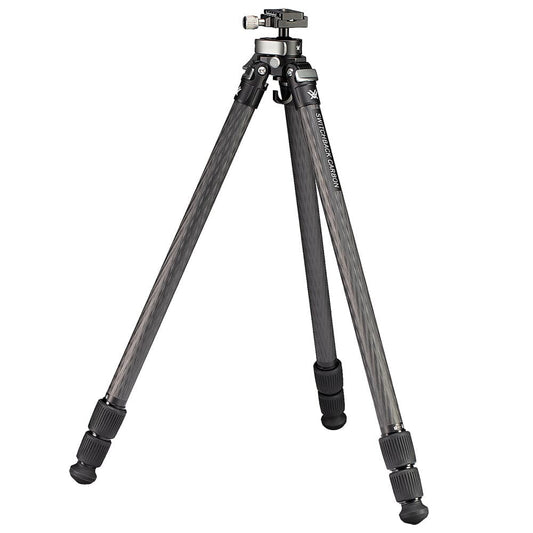

If you’re on the hunt for a reliable tripod to support your heavy gear without weighing you down, the Vortex Switchback Carbon Tripod Kit is your perfect companion. This tripod shines with its impressive strength-to-weight ratio, crafted from durable carbon fiber, ensuring you can confidently mount your heavy rifles, large binoculars, or long-range optics. Weighing just 4.6 lbs, it can handle loads up to 44 lbs, making it an exceptional choice for precision shooting or wildlife observation.
Height adjustments are a breeze with intuitive twist-lock controls, letting you go from a compact 5.8” to a towering 65” in seconds. Plus, its compatibility with all ARCA-Swiss standard quick releases means you won’t miss a moment in the field. Whether you're in the mountains or at a shooting range, this tripod's versatile features and included accessories like a detachable counterweight hook and carrying case make it an essential part of your outdoor gear.
Features:
- LIGHTWEIGHT DESIGN for easy transport without compromising stability.
- HIGH LOAD CAPACITY supports equipment up to 44 lbs, perfect for heavy gear.
- TWIST-LOCK CONTROLS allow for quick and secure height adjustments.
- ARCA-SWISS COMPATIBILITY enhances versatility for various optics.
- DETACHABLE COUNTERWEIGHT HOOK provides added stability in windy conditions.
- INCLUDES CARRY CASE for convenient transport and protection during travel.
- SPIKE FEET OPTION ensures a firm grip on uneven terrain.
- DURABLE CARBON FIBER construction delivers long-lasting performance.
Technical Specifications Table
| Specification | Details |
|---|---|
| SKU | TR-SBC-Vortex |
| UPC | 843829135986 |
| Max Height | 65" |
| Min Height | 5.8" |
| Folded Height | 29" |
| Weight | 4.6 lbs |
| Material | Carbon Fiber |
| Color | Black |
What’s in the Box?
- Vortex Switchback Carbon Tripod
- Quick Release Plate
- Detachable Counterweight Hook
- Carrying Case
- Multi Tool
- Spike Feet
Customer Reviews
"This tripod is incredibly sturdy and lightweight. Perfect for my spotting scope!"
"I love the quick release feature. Switching between my rifle and binoculars is seamless!"
FAQ
1. How does the Vortex Switchback compare to other tripods?
The Switchback stands out with its carbon fiber construction, offering a superior strength-to-weight ratio compared to many aluminum alternatives. This makes it a top choice for those needing durable yet lightweight support.
2. Can I use this tripod for photography?
Absolutely! The Vortex Switchback is compatible with various quick release plates, making it suitable for photographers who require stability during shooting sessions.
Similar Models
Looking for more options? Check out our Vortex collection, including the Vortex Pro GT Tripod for added flexibility and stability, or the Vortex Summit Carbon Tripod for a more compact choice. Explore our complete range for precision tools that elevate your outdoor adventures.
You May Also Like
Here’s some of our most similar products people are buying. Click to discover trending style.






